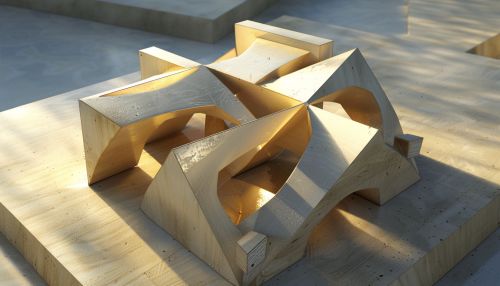3D Graphics
Introduction
Three-dimensional (3D) graphics are visual representations of objects in three dimensions. These graphics are created using mathematical and computational models to represent spatial relationships between objects. The field of 3D graphics has evolved significantly over the years, with advancements in technology and the development of new algorithms and techniques.


History of 3D Graphics
The history of 3D graphics dates back to the mid-20th century, with the development of the first computer graphics systems. These early systems were primarily used for scientific and engineering applications, such as the visualization of complex mathematical functions or the design of industrial parts. The first 3D graphics systems were developed in the 1960s and 1970s, with the introduction of vector graphics and raster graphics. These systems used mathematical models to represent objects in three dimensions, and algorithms to render these objects onto a two-dimensional screen.
In the 1980s and 1990s, the development of personal computers and video game consoles led to a boom in the use of 3D graphics for entertainment purposes. The introduction of the Graphics Processing Unit (GPU) in the late 1990s revolutionized the field of 3D graphics, allowing for the real-time rendering of complex 3D scenes.
Mathematical and Computational Models
The creation of 3D graphics involves the use of mathematical and computational models to represent objects in three dimensions. These models are used to describe the shape, position, and orientation of objects, as well as their appearance and behavior.
One of the most common mathematical models used in 3D graphics is the polygon mesh, which represents the surface of an object as a collection of polygons. Other models include NURBS (Non-Uniform Rational B-Splines), which are used to represent smooth surfaces, and voxel-based models, which represent objects as a three-dimensional grid of volume elements.
The appearance of 3D objects is often described using materials and textures. Materials define the optical properties of an object, such as its color, reflectivity, and transparency. Textures are images that are mapped onto the surface of an object, adding detail and realism.
Rendering Techniques
Rendering is the process of generating an image from a 3D model. This involves calculating the color of each pixel in the image based on the properties of the 3D model and the lighting conditions. There are several different rendering techniques, each with its own strengths and weaknesses.
Rasterization is the most common rendering technique used in real-time 3D graphics, such as video games. This technique involves projecting the 3D model onto a 2D screen, and then filling in the resulting polygons with pixels.
Ray tracing is a more advanced rendering technique that simulates the physical behavior of light. This technique traces the path of light rays through the scene, calculating the color of each pixel based on the light sources and objects that the rays encounter. Ray tracing is capable of producing highly realistic images, but it is also computationally intensive.
Radiosity is another advanced rendering technique that simulates the indirect illumination of a scene. This technique calculates the way that light is reflected and absorbed by surfaces, creating soft shadows and color bleeding effects.
Applications of 3D Graphics
3D graphics are used in a wide range of fields, from entertainment to science and engineering. In the entertainment industry, 3D graphics are used to create visual effects for movies and television shows, as well as the graphics for video games. In the field of science and engineering, 3D graphics are used for data visualization, computer-aided design (CAD), and virtual reality applications.
In recent years, the use of 3D graphics has also expanded into other areas, such as medicine, where they are used for medical imaging and surgical planning, and architecture, where they are used for building design and visualization.
Future of 3D Graphics
The future of 3D graphics is likely to be shaped by advancements in technology and the development of new algorithms and techniques. One area of ongoing research is the development of more realistic rendering techniques, such as global illumination models that simulate the full range of light interactions in a scene.
Another area of research is the development of more efficient algorithms for handling large amounts of data, such as point cloud data or voxel-based models. These algorithms could enable the creation of more detailed and realistic 3D graphics.
The advancement of hardware technology, such as GPUs and virtual reality headsets, will also continue to drive the development of 3D graphics. These advancements could enable the real-time rendering of more complex and realistic 3D scenes, as well as the development of new applications for 3D graphics.
